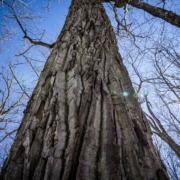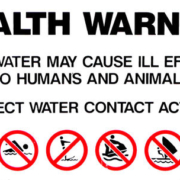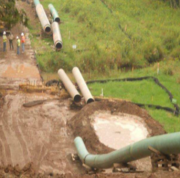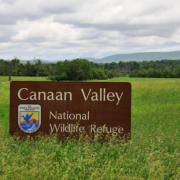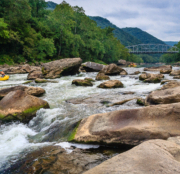July 2018
WVDEP: Pipeline developers failed to control erosion, follow water quality rules – Charleston Gazette-Mail, 7/30/2018
West Virginia Rivers Coalition in Fayetteville – WVVA.com, 7/28/2018
Mountain Valley Pipeline cited 5th time by state regulators for violations – Charleston Gazette-Mail, 7/20/2018
Water in Appalachia Needs a Trillion Dollar Solution – WV Public Broadcasting, 7/9/2018
WV DEP to take comments on water quality standards – Charleston Gazette-Mail, 7/4/2018
Atlantic Coast Pipeline Permit Under Fire from Environmental Advocates – WV Public Broadcasting, 7/3/2018
Vital federal fund could be lost without renewal – MetroNews, 7/2/2018
Little public input in decision to route pipeline through WV state forest
Little Public Input in Decision to Route Pipeline Through WV State Forest
By Rick Steelhammer, Charleston Gazette-Mail
June 30, 2018
Following a series of public meetings and input from a host of state and federal regulators, environmental groups and forest users, developers of the Atlantic Coast Pipeline opted in February 2016 to re-route 12 miles of the proposed natural gas line out of the Monongahela National Forest.
While that decision left only 5.1 miles of the pipeline still within the Monongahela, the detour added about 30 miles to its overall length, most of which will be absorbed by private landowners in Pocahontas County.
But one tract of public land — Seneca State Forest — ended up encompassing nearly as much pipeline mileage as the Monongahela under an agreement worked out by state officials and pipeline representatives with virtually no public involvement.
While nearly all recreational amenities inside the forest will be bypassed by the ACP, the pipeline will follow, and obliterate, the route of the Allegheny Trail for a little less than a mile, forcing a re-routing of the 330-mile cross-state pathway through the Seneca.
The new Allegheny Trail location “will be an enhancement from the current location,” said Doug Wood of the West Virginia Scenic Trails Association, creator and caretaker of the Allegheny Trail.
The new trail route prevents “further damage to a streamside wetland, opens up a vista or two, decreases some steep grades, and provides a footbridge over Laurel Run to replace a homemade version that has washed out at least twice,” Wood said. The trail realignment also includes a new trailhead parking area at Laurel Run, he added.
Plans call for existing forest roads to be used as temporary haul roads for pipeline materials and equipment, though several miles of new roads apparently will be cut to reach more remote construction sites. Scenic vistas will be diminished at several locations due to the presence of the pipeline and new access roads, according to viewshed studies.
“My biggest problem with the Seneca State Forest-Atlantic Coast Pipeline matter is that public input was not solicited, nor was the decision-making process open,” said Allen Johnson, of Frost, who lives within several hundred feet of the pipeline near the Seneca State Forest boundary. “And, hey, it’s our land!”
An absence of prompt public disclosure on a related matter also troubled members of the Pocahontas County Commission.
In December of 2016, the Buckskin Council of Boy Scouts of America sold 1,200 acres of its Dilley’s Mill Scouting Reserve summer camp, adjacent to Seneca State Forest, to the Maryland-based Conservation Fund.
Months later, county commissioners learned that the Dominion Conservation Fund, a charitable arm of Dominion Energy Transmission, the lead developer of the ACP, had paid for the purchase, apparently to donate to Seneca State Forest to mitigate for pipeline construction activity.
“The deal had already been done without them telling us anything about it,” said Robert Martin, attorney for the Pocahontas County Commission. “Previous county commissions had paid the [Dilley’s Mill] electric bills, and most of the construction work that needed to be done out there was done by locals.”
State officials would not comment on whether the former BSA land had been transferred to Seneca State Forest. But earlier this month, Ann Simonelli of The Conservation Fund said in an email that the 1,200 acres had been transferred to the State of West Virginia in May 2018.
“It is now part of Seneca State Forest, protecting important forest wildlife habitat and possibly providing future outdoor recreation opportunities,” she wrote. “The property’s acquisition was funded by Atlantic Coast Pipeline to offset impacts to forest habitat and recreation within the state forest from construction of the pipeline.”
Created in 1924, Seneca is the oldest state forest in West Virginia. It includes 11,680 acres of mountainous terrain between Dunmore and the Pocahontas County High School campus and includes several miles of Greenbrier River shoreline, giving it the added distinction of being the state’s second-largest state forest.
Seneca offers 23 miles of hiking trails, the state’s first public campground, a picnic area, a 4-acre fishing lake, and eight “pioneer” cabins served by hand pumps and gas lights in lieu of running water and electricity.
The forest’s newest and most frequently booked lodging is the Thorny Mountain Fire Tower, a restored 1935 fire observer’s lookout station perched atop a 55-foot tower at the summit of a 3,415-foot peak.
Across W.Va. 28 from the north end of the forest, a crushed-rock parking lot in a pasture serves as the staging area for contractors now in the process of clearing right-of-way for the 42-inch wide, 600-mile long, $5 billion ACP, which will carry shale gas from Lewis County to eastern Virginia and North Carolina.
A right-of-way cut can be seen ascending the hills to the east, where the Virginia border lies a few miles distant.
Since trees were felled along a section of right-of-way at the edge of the forest early this year, work has yet to resume in the Seneca.
A federal appeals court ruling in May invalidated the pipeline’s “incidental take” permit from the U.S. Fish and Wildlife Service for being too vague in listing the maximum number of federally protected species that can be lawfully killed or disturbed during construction.
But since the ruling, right-of-way clearing work has resumed in areas along the pipeline route where the five species of concern are not known to live.
Seneca State Forest is known to be home to three of the species. Endangered Indiana bats and northern long-eared bats — a federally-listed threatened species — have turned up in bat surveys in the forest and a colony of small whorled pogonias, a threatened orchid species, is known to exist within 70 feet of the pipeline right-of-way.
It is not known when the Fourth Circuit Court of Appeals will make a more comprehensive ruling on the incidental take matter, as announced in May. Meanwhile, pipeline construction activity is expected to ramp up.
The May ruling “only impacted a small portion of the route — about 20 or so miles out of 100 in West Virginia,” said Aaron Ruby, spokesman for the ACP. “We won’t construct in those areas until a revised incidental take statement is issued.”
Original article: https://www.wvgazettemail.com/news/little-public-input-in-decision-to-route-pipeline-through-wv/article_17d8d866-253b-5c76-9557-b59d9b8d3079.html
Vital federal fund could be lost without renewal
Vital Federal Fund Could be Lost Without Renewal
By Chris Lawrence, WV MetroNews
July 02, 2018 at 12:10AM
CHARLESTON, W.Va. — A water advocacy group in West Virginia is pushing the state’s Congressional Delegation to back renewal of a little known conservation and recreation fund which has had a big impact on West Virginia over the years. The Land and Water Conservation Fund is due to expire in September unless Congress renews.
“It’s been around since 1964,” said Matt Kearns of the West Virginia Rivers Coalition. “It was originally authorized for 25 years and renewed for another 25. Then in 2015 it was authorized for 3 years and it will sunset in September 2018.”
Kearns and others are reluctant to let the fund go because of the vast number of projects it has funded in West Virginia both on federal land and through grants to other state and local public places.
“The federal side has bought boater access for the New and Gauley National Rivers, it bought property in the National Forest, it bought mineral rights under Cranberry Wilderness,” said Kearns. “Canaan Valley National Wildlife Refuge, Ohio River Islands National Wildlife Refuge, and Harper’s Ferry have all benefited.”
However, beyond those well known areas of West Virginia, the funding in the form of recreational and conservation grants has paid for ballparks, playgrounds, and other public recreational facilities statewide over the years. All but one of the state’s counties received some level of grant funding from the fund over the years.
The fund is fueled with annual contributions from a tax on off-shore gas and oil drilling, mostly in the Gulf of Mexico. The purpose was to compensate the United States for the potentially negative impacts of drilling by creating vast recreational and conservation projects around the nation. The fund is authorized to received up to $900 Million annually, but rarely gets that much. This year it received $425 Million.
Kearns indicated they are finding favorable support among the state’s Congressional Delegation for a renewal.
“Senator Manchin and Senator Capito both support renewing the fund and attaching a permanent renewal to it so we don’t have to debate whether the fund should exist,” said Kearns. “Senator Manchin also supports a measure to make sure it is fully funded each year.”
The fund was originally created for 25 years and was renewed for another 25 year period. The last renewal in 2015 only renewed the fund for three years.
Original article: http://wvmetronews.com/2018/07/02/vital-federal-fund-could-be-lost-without-renewal/
Fund that Helps Protect Iconic WV Sites is in Question
Fund that Helps Protect Iconic WV Sites is in Question By Dan Heyman, WV Public News Service June 29, 2018 CHARLESTON, W. Va. – Congress has three months to renew what’s described as a vital – but largely invisible – program for conserving special places in West Virginia and across the country. The Land and […]
West Virginia Rivers Coalition
3501 MacCorkle Ave SE #129
Charleston, WV 25304
Office: 304-637-7201


